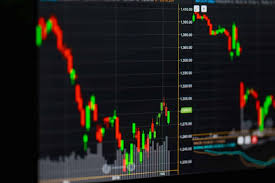
Forex trading patterns are fundamental tools that help traders analyze market movements and make informed decisions. These patterns manifest in the price charts of currency pairs, providing insights into future price action. Understanding these patterns can significantly enhance your trading skills and strategy. If you’re interested in improving your trading journey, check out forex trading patterns Forex Brokers in Uzbekistan for valuable resources. In this article, we’ll dive deep into the various types of forex trading patterns and how to leverage them effectively.
What Are Forex Trading Patterns?
Forex trading patterns refer to recognizable formations in price charts that provide signals regarding potential future price movements. These patterns can form over various time frames, including minutes, hours, days, or weeks, depending on the trading strategy employed. By identifying these patterns, traders can anticipate market behavior and position themselves accordingly.
Types of Forex Trading Patterns
1. Continuation Patterns
Continuation patterns indicate that the prevailing trend will likely continue after a brief pause. These patterns suggest that the market is consolidating before making another move in the same direction. Common continuation patterns include:
- Flags: These appear as small rectangles that slope against the prevailing trend.
- Pennants: Similar to flags but are characterized by converging trend lines.
- Triangles: Formed when price action creates a series of higher lows and lower highs, anticipating a breakout in either direction.
2. Reversal Patterns
Reversal patterns signal a potential change in the direction of the trend. These patterns can suggest that the current upward trend may reverse downward or vice versa. Key reversal patterns include:
- Head and Shoulders: This pattern consists of three peaks: a higher peak (head) between two lower peaks (shoulders). A reversal is expected when the neckline is broken.
- Inverse Head and Shoulders: The opposite of the head and shoulders pattern, indicating a potential bullish reversal.
- Double Top and Bottom: A double top indicates a bearish reversal after an uptrend, while a double bottom indicates a bullish reversal after a downtrend.
How to Trade Using Forex Patterns
Identifying forex trading patterns is just the first step. Traders need to develop a strategy to execute trades based on these patterns. Here are some key steps to consider when trading using patterns:

1. Confirm the Pattern
Before entering a trade based on a pattern, confirmation is crucial. This can be done using other technical indicators such as volume, oscillators (like the RSI), or moving averages. Confirmation helps validate the pattern’s reliability and reduces risk.
2. Set Appropriate Entry Points
Once a pattern is confirmed, traders should determine an optimal entry point. This is often done at the breakout level—when the price moves above a resistance level for bullish patterns or below a support level for bearish patterns.
3. Establish Stop-Loss and Take-Profit Levels
To manage risk effectively, setting stop-loss and take-profit levels is essential. These levels can be based on previous support and resistance, allowing the trader to exit the trade if it moves against them while locking in profits at predetermined levels.
The Importance of Market Context
While forex trading patterns are powerful tools, they should be analyzed within the broader market context. Factors such as economic indicators, geopolitical events, and market sentiment can significantly influence price action. Understanding the overall market environment helps traders make more informed decisions and anticipate potential volatility.
Common Mistakes When Trading Patterns
Traders often make errors when trading patterns, leading to losses. Here are some common mistakes to avoid:
- Ignoring Confirmations: Entering trades without confirmation increases risk. Always look for supporting evidence before executing trades.
- Overtrading: Traders might see patterns where none exist. It’s vital to wait for clear signals instead of forcing trades.
- Neglecting Risk Management: Failing to set stop-loss orders or risking too much on a single trade can lead to significant losses. Always practice prudent risk management.
Conclusion
Forex trading patterns are invaluable resources that can enhance trading effectiveness and decision-making. By recognizing these patterns, traders can anticipate market movements and position themselves for success. However, it’s crucial to combine pattern recognition with a broader understanding of market dynamics and solid risk management practices. As you continue your forex trading journey, keep honing your skills in identifying patterns while learning from the market. Always remain adaptable and informed to navigate the ever-changing landscape of forex trading.
